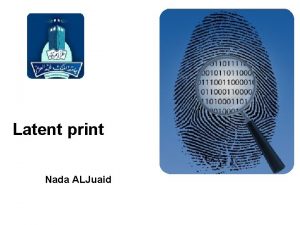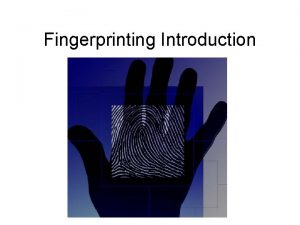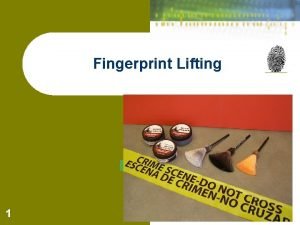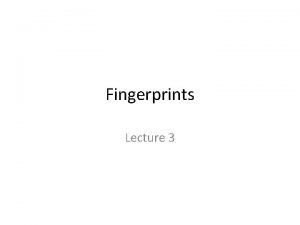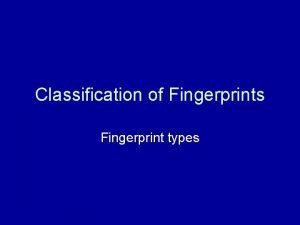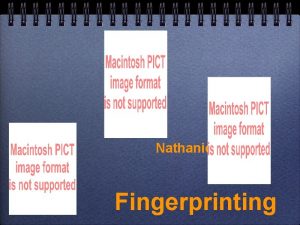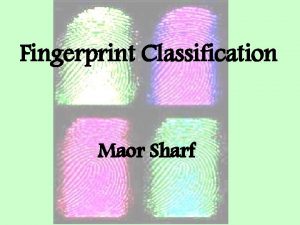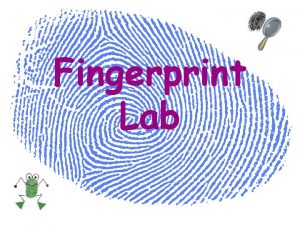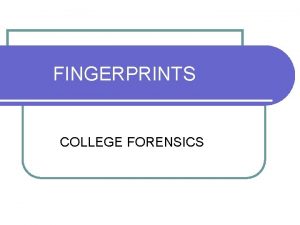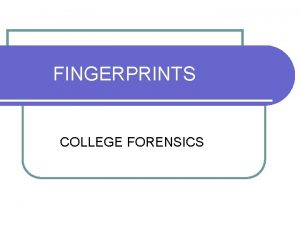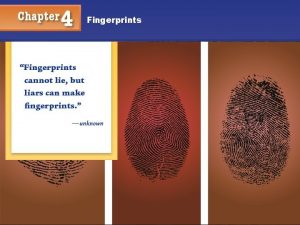Fingerprint Lifting 1 Types of Fingerprints There are









- Slides: 9

Fingerprint Lifting 1

Types of Fingerprints There are 3 types of prints that investigators look for at crime scenes: 1. Patent fingerprints are visible prints transferred onto smooth surfaces by blood or other liquids. 2. Plastic fingerprints are indentations left in soft materials such as clay or wax. 3. Latent fingerprints are not visible but made so by dusting with powders or the use of chemicals. 2 Forensic Science: Fundamentals & Investigations, Chapter 6

Latent Prints § § 3 Latent fingerprints are those that are not visible to the naked eye. These prints consist of the natural secretions of human skin and require development for them to become visible. Most secretions come from three glands: § Eccrine—largely water with both inorganic (ammonia, chlorides, metal ions, phosphates) and organic compounds (amino acids, lactic acids, urea, sugars). Most important for fingerprints. § Apocrine—secrete pheromones and other organic materials. § Sebaceous—secrete fatty or greasy substances. Kendall/Hunt Publishing Company

Developing Latent Prints § Developing a print requires substances that interact with secretions that cause the print to stand out against its background. It may be necessary to attempt more than one technique, done in a particular order so as not to destroy the print. § § 4 Powders—adhere to both water and fatty deposits. Choose a color to contrast the background. Iodine—fumes react with oils and fats to produce a temporary yellow brown reaction. Kendall/Hunt Publishing Company

Developing Latent Prints Ninhydrin—reacts with amino acids to produce a purple color. § Silver nitrate—reacts with chloride to form silver chloride, a material which turns gray when exposed to light. § Cyanoacrylate—“super glue” fumes react with water and other fingerprint constituents to form a hard, whitish deposit. In modern labs and criminal investigations, lasers and alternative light sources are used to view latent fingerprints. These were first used by the FBI in 1978. Since lasers can damage the retina of the eye, special precautions must be taken. § 5 Kendall/Hunt Publishing Company

Iodine Fingerprint Kendall/Hunt Publishing Company 6

Ninhydrin Fingerprint 7 Kendall/Hunt Publishing Company

Cyanoacrylate (superglue) Fingerprints Kendall/Hunt Publishing Company 8

Fingerprint Forensic FAQs l How are latent fingerprints collected? 9 Forensic Science: Fundamentals & Investigations, Chapter 6


